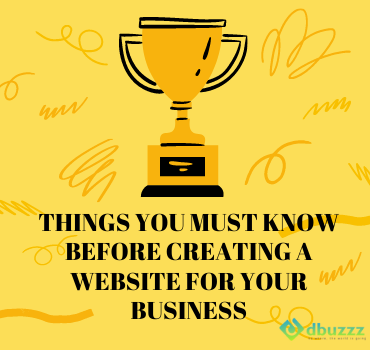
Creating websites is a large industry, and while it may appear to be a difficult undertaking, it is not always so. Whether you are a web designer or a developer, or even simply someone who wants to have a presence on the internet but has little or no expertise, a little forethought may make the web design process much more straightforward and efficient.
As a quick review, these are some of the most important things to consider when designing your website. We hope you find our brief refresher guide to be helpful.

#1. For whom Your Website is?
It’s critical to first identify your target audience. ‘Who is my target audience?’ and spend some time learning about your target population. Assume you’re building a website for a young-targeted apparel line. In this case, you’ll probably go to pop culture for inspiration.
#2. Where is your website?
The next stage is to plan the structure of your website. Consider it a blueprint. When building the site map, start with the homepage. Then construct a map to all other pages on the site.
Every page should link back to the homepage, but where else should they go? Contact, about, more content, blogs? Consider the size of your website and the content you will present.
#3. Content
This neatly leads to your website’s content. The content may not be the most important aspect of the overall design, but it should not be overlooked. Consider the website as a blank page
A few sentences on this sheet of paper will be dull and unappealing. Your content must keep visitors on your site. Consumers are most turned off by unclear messages, with 46% citing this as a reason for leaving a site. Good content can engage your audience, improve your SEO, and help you communicate with your consumers. It is important to employ ‘beautifully designed’ material to communicate this effectively.
#4. Images and Visually Appealing
After you have your material, consider pictures. Consider where they will come from. You have a few alternatives. You may capture the photos yourself, which is the quickest and cheapest option. But, if you’re not a great photographer, do you want your site to suffer because of it?
You may even employ a photographer to acquire all the shots you desire. This is a costly approach, but it may be the only option if you need to maintain a high-quality brand image. Finally, utilize stock pictures. You may obtain photos for your website for a cheap fee from an online image library. However, generic pictures may not adequately represent your business.
#5. Branding
This leads to branding. Some brands have a website. Thus this is their sole visual representation. Before designing a website, you must consider a company’s image. To build a website, you need to carefully evaluate any current branding or create a brand identity from the start. You may flex design muscles here.
Consider these points:
- Have you had a logo?
This is a good place to start since you can use components of the logo to build the brand image.
- Which font will you use?
Sans serif fonts are now the most popular. Serif fonts don’t even crack the top 20 fonts used on websites. Free typefaces are readily available online, with Google Fonts being a good place to start. Google says ‘Open Sans’ is the most popular now.
- How about the color of the website?
Consider color theory here. For example, a website for an eco-friendly housing firm should use green to symbolize the brand’s greenness.
- Any design elements?
Icons are hot right now, serving as visual clues for the viewer. These might be included in your brand image.
#6. User Experience
Speaking about visual signals, usability is critical in site design. Consistency is an important factor. You must deconstruct all elements such as buttons, hover states, and menus. When using rounded rectangles for clickable components, all buttons should be rounded rectangles.
All it takes is a few subtle cues to get the user to use your site automatically. Also, consider menus. While hamburger menus are becoming increasingly prevalent on websites, they are still not as user-friendly as basic header navigation (unless on mobile, where they are more common)—the simpler the path, the better the user experience.
#7. The layout of the Website
Designing a website follows the same ideas as designing a billboard or front page. It’s vital to balance graphics and content on your page. More than half of consumers value good design while accessing online material.
When building a website, keep it basic and easy to understand for the user—the more clear the hierarchy, the better the navigation. Keep visual signals to a minimum to avoid user confusion. Keeping things simple helps users find the material they desire. Consider wireframing the site before designing the real interface. So you can cut, modify, and test the design.
#8. Responsive Website
Nowadays, we use the internet on a variety of gadgets. There are several screen sizes for websites, ranging from smartphones to widescreen TVs. One research found that consumers use an average of five distinct devices, illustrating how vital your website is to be compatible with all of them.
A responsive website provides a better user experience, which keeps visitors on your site longer. According to statistics, 62% of businesses that developed a mobile-friendly website gained sales. With this in mind, you’ll need to think about how your design will work on a small screen like a smartphone.
Conclusion
Simply said, with a little thought and organization, creating a website can be a breeze. The significance of being responsive and making sure your website is ready for multiscreen viewing is one of the essential things you should take away from this post. To improve your site’s user experience through smart design, keep all of the above suggestions in mind. If you have any doubt you can ask us in the comment section below.
Be quick! FREE Spots are Almost Gone
Comments( 3 )
13 Crucial Things for Best Website Design that Attracts More Customers!
dbuzzz
October 23, 2021
Yes! Your Words Are Really True As Design Has A Big Influence
dbuzzz
October 26, 2021
Yes Design Play A Big And Important Role While Creating An Online Influence